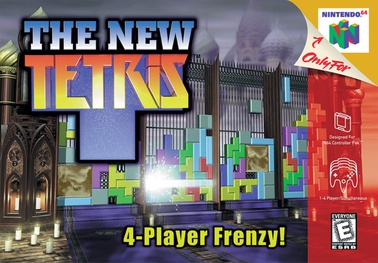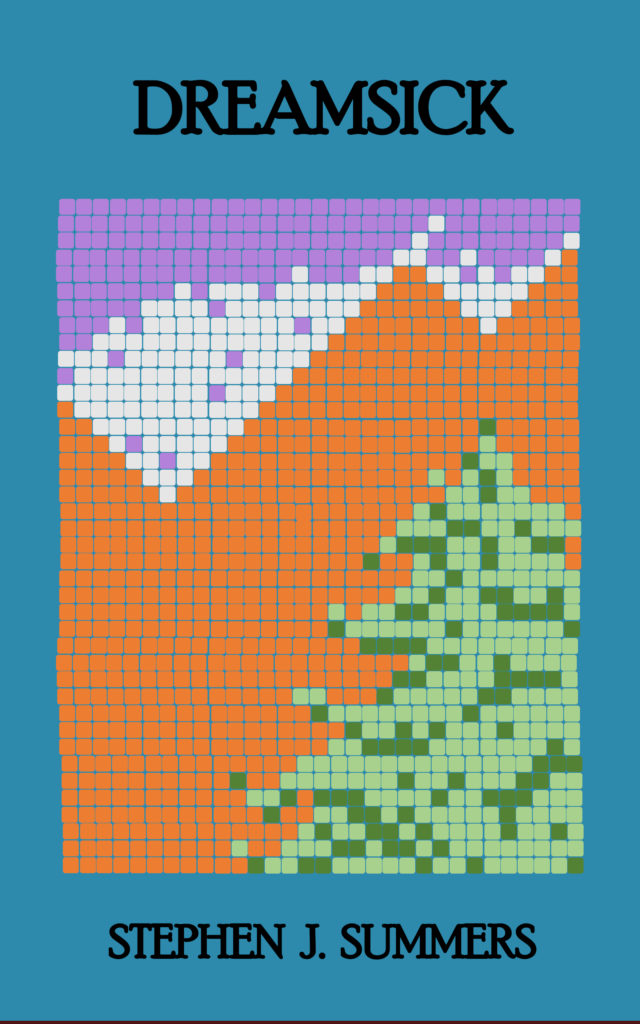Okay, I have to clear up some things immediately with this pick, as some of you will be scratching your heads. Why not just pick Tetris for this spot and call it good? Tetris is the perfect puzzle game, reincarnated many times over, so good it tore up the Cold War curtains and whatnot. It made gamers out of a whole bunch of non-gamers. It even broke the law a few times: I have a copy of the Tengen-published, two-player NES version of Tetris that’s probably still illegal in Japan (it was legal in the dorms, though, right, Josh and Ben?). Okay, maybe not illegal, but Nintendo would probably like it buried in the E.T. landfill.
The point is, Tetris isn’t really a game, it’s a cultural phenomenon from the 80s that captured a zeitgeist and didn’t have the courtesy to disappear afterward. No, it actually improved in another form—The New Tetris. Now, many of you have probably never heard of The New Tetris, and I would assume that if you had heard of it you might have relegated it to the tawdry world of New Coke (which appeared in 1985, alongside the old Tetris) or New Math (another Soviet-driven novelty).
And, in fact, The New Tetris could have used way better marketing. Branding anything “new” is a curse, they probably teach that in Marketing 101. Nothing new stays new, and new things become old things much faster if they say “new.” Nothing gold can stay! Anyway, another big miss was putting a game old and simple enough to have driven sales on the original Game Boy in 1989 on the flashy new Nintendo 64 console. How could something so familiar be worth $60 (in 1999 bucks–that’s about $110 as of this writing)?
Well, all that bad stuff out of the way, here’s what The New Tetris did right: it took advantage of the Nintendo 64’s four controllers to allow you to really play an action-packed game of Tetris. Before, Tetris was largely a solo jaunt, something to do in the car until it was too dark to see the Game Boy screen. Now it was a party game.
The other thing they did right was give you a reason to keep on playing: the more you played, the bigger you built these “world wonders” or whatever they were; it gave you something to work toward, which is a great when you’re dealing with an endless puzzle game that can get a little tedious at times. Also, the ethereal EDM soundtrack layered into the background is really the perfect Tetris chill mix.
But the best thing they did? Unlike Pepsi Max or the Nintendo Virtual Boy or Windows ME or other “new” installments, The New Tetris actually did make the original game much better. I could play this one for hours and hours and hours, whereas the original I could never lose myself in completely. The big difference was the control: in the old Tetris the physics were sterner and you couldn’t spin a block once you ran out of physical space to turn it. In The New Tetris, you could spin for a long, long time, right through other blocks, without any physical resistance–at least for a second or so. That meant you left behind a game that boxed you in very quickly and felt creatively claustrophobic in favor of a New game where you could hit the button 100 times a second and spin that shape into its perfect place. The addition of a little bit of video game physics didn’t hurt the experience—I mean, this was a video game, after all. This tiny change, the ability to spin the block for just that extra moment or two, turned Tetris from a game of frustration into a real test of skill; it rewarded the player for doing the impossible, for waiting for the last possible minute, just before combustion, and BOOM, spinning that piece like your life depended on it. One tiny change completely opened up the classic puzzle formula and made you ask why it hadn’t been in the original.

The other big change? Silver and gold blocks. Join four different pieces together into a four-by-four square and you would turn that block silver. When you cleared each line of it, you’d get mega points. Even better, combine four blocks of the same type into a four-by-four square and it turned gold, and you’d really make the points rain down when you cleared it. Again, this was a relatively minor improvement on the old formula, but it added value to certain kinds of drops and positions, rather than mushing every falling block into the same bowl of soup.
And, finally, you could keep one piece in storage and choose when to swap it in for another piece coming down the assembly line. This mechanic was not as new as the previous two, and it shows up in other Tetris games from time to time (though not the original), but this fundamentally improves the strategy you can use here. Likewise, instead of only seeing one block into the future (as the NES version managed), The New Tetris showed you three blocks ahead, practically turning your N64 into an oracle.
That’s the secret to what made this game timelessly great: three big changes that give the player more tactics, strategy, and control. If you want to feel like a helpless bystander watching the wrong blocks fall in old Tetris with nothing you can do about it, hey, stick with the classic. But if you want to take charge, turn garbage into gold and silver, and build not just walls but pyramids and statues, well, my friend, you’d better go hustle up a copy of The New Tetris! Looks like you can get it for about $30 on eBay, and it’s definitely worth it.
It shouldn’t have worked as well as it does: the backgrounds and cut scenes could have felt gimmicky, the nontraditional control additions could have felt cheap, and in no way can an N64 knock-off of Tetris live in my Top 10 Games, can it? Somehow, it reaches these stratified heights by just being a whole lot of fun, and one of the most meditative experiences in all of video gaming. Come meet The New Tetris! Even better than the old Tetris!


